 April 25, 2019 John E. Ross, KD8IDJ, Editor
| ||||||
Internet Access to ARRL Systems May Be Disrupted on April 28 Maintenance work on April 28 may disrupt ARRL Headquarters systems -- including VPN connections and Logbook of The World. The main website should remain online during this outage, which could last for up to 4 hours on April 28, starting at approximately midnight EDT (0400 UTC on April 29). All services will automatically resume as soon as connectivity is restored. Email should not be affected. Any orders placed via the ARRL Store during the outage will be queued for handling after connectivity returns. We apologize for any inconvenience. Faster, More Contest-Friendly FT4 Digital Protocol Beta Version to Debut on April 29 A new, speedier, more contest-friendly digital mode is just days away, initially in beta form. WSJT-X developers say serious work on the new FT4 protocol began shortly after the FT8 Roundup held last December 1 - 2. The goal was a mode that could compete with RTTY contesting in terms of contact rates, while preserving many of the benefits of FT8.
The developers say FT4 soon will be ready for testing by a larger group and they're seeking interested participants who can offer their "considered feedback." They suggest reading The FT4 Protocol for Digital Contesting first. A general release of the WSJT-X suite that includes FT4 is anticipated in July. According to the document, FT4 is an experimental digital mode designed specifically for radio contesting that -- like FT8 -- uses fixed-length transmissions, structured messages with formats optimized for minimal contacts, and strong forward-error correction. Transmit-receive sequences are 6 seconds long, making it 2.5 times faster than FT8 and about the same speed as conventional RTTY for radio contesting. FT4 can work with signals 10 dB weaker what would be required to decode RTTY while using much less bandwidth.
Transmissions last for 4.48 seconds, compared to 12.64 seconds for FT8. Modulation uses four-tone frequency-shift keying at approximately 23.4 baud, with tones separated by the baud rate. The occupied bandwidth is 90 Hz. "We plan to post downloadable installation packages for WSJT-X version 2.1.0-rc5 on Monday, April 29," the Development Group said. "A few parameters and operating behaviors of FT4 are still being tested and optimized," the initial FT4 guide says. "It will be very useful to hold several more mock contest practice sessions, with a larger group of active participants." Even if these practice sessions reveal no serious bugs or inadequacies, the WSJT-X development group believes FT4 is still too new to be used in the ARRL VHF Contest (June 8 - 10) and ARRL Field Day (June 22 - 23). For that reason, release candidate WSJT-X 2.1.0-rc5 will "time out" on June 7. A general availability release is expected in mid-July. Read more. IARU Argues for Protection from Wireless Power Transfer Spurious Emissions The International Amateur Radio Union (IARU) was represented April 8 - 10, when CEPT Committee SE24 - Short Range Devices met in Ankara, Turkey, to undertake further work concerning wireless power transfer/transmission (WPT). SE24 is considering WPT for electric vehicles (WPT-EV) and also for generic applications.
At the Ankara meeting, IARU and other interested parties provided further input. SE24 will meet again in early July to focus on WPT issues. Also at Ankara, IARU attended the Short-Range Devices Maintenance Group meeting (SRD/MG), where it was noted that further work was needed in SE24 before spurious emission limits for WPT devices could be addressed in a regulatory sense. IARU was represented in Ankara by IARU Region 1 President Don Beattie, G3BJ, who is spearheading the IARU's work in this area. The issue of WPT-EV is World Radiocommunication Conference 2019 (WRC-19) Agenda Item 9.1.6, for which studies are still under way. Broadcasters, land mobile services, and others have also expressed concern about spurious WPT-EV emissions. Further work remains regarding generic WPT systems for such applications as cell phone charging, power tools, and household appliances. Technology: FCC Asked to Allow All Digital Transmissions on AM Band According to Radio World, a prominent advocate for the Standard Broadcast Band (AM band) has petitioned the FCC to allow stations to use all-digital transmissions in the US. In March, Bryan Broadcasting Corporation asked the Commission to initiate a proceeding to authorize the MA3 primary all-digital service mode for any AM station that chooses to do so. Bryan is the licensee of four AM and five FM stations (and six FM translators) in central Texas. All HD Radio receivers in the market that have AM functionality would be able to receive such all-digital signals, the article explains, but legacy AM receivers would not.
The petition also noted discussions that the AM band has "become so overwhelmed by interference and impulse noise that the resultant audio product is rendered unacceptable to modern listeners." The petition said the noise floor generated by unlicensed devices and affecting the AM band "has been noticeable -- and increasing -- for years." According to the petition, Bryan has tried to quantify the noise floor increase, but that studies have not been undertaken in the US. The petition said experience in other countries suggests a rise from anywhere between 10 dB and 40 dB between the 1970s and the early 2000s." The Doctor Will See You Now! "Handheld Transceivers" is the topic of the new (April 25) episode of the ARRL The Doctor is In podcast. Listen...and learn!
Every 2 weeks, your host, QST Editor-in-Chief Steve Ford, WB8IMY, and the Doctor himself, Joel Hallas, W1ZR, will discuss a broad range of technical topics. You can also email your questions to doctor@arrl.org, and the Doctor may answer them in a future podcast. Enjoy ARRL The Doctor is In on Apple iTunes, or by using your iPhone or iPad podcast app (just search for ARRL The Doctor is In). You can also listen online at Blubrry, or at Stitcher (free registration required, or browse the site as a guest) and through the free Stitcher app for iOS, Kindle, or Android devices. If you've never listened to a podcast before, download our beginner's guide. Meet ARRL Authors at the ARRL National Convention
Books will be available for purchase within the ARRL exhibit area for authors to autograph. In addition to the Meet the Authors area, ARRL National Convention exhibits and activities will include QSL card checking for ARRL award programs, the opportunity to have your handheld transceiver checked for spurious emissions, and much more. ARRL exhibits will be located in Building 2 of the Greene County Fairgrounds and Expo Center. Visit the ARRL National Convention and Hamvention web pages for a complete convention rundown. Just Ahead in Radiosport
See the ARRL Contest Calendar for more information. For in-depth reporting on Amateur Radio contesting, subscribe to The ARRL Contest Update via your ARRL member profile email preferences. The K7RA Solar Update Tad Cook, K7RA, Seattle, reports: Following a good 2-week run, sunspots disappeared after April 20. The average daily sunspot number for the recent reporting week was 8.1, down from 14 last week, and average daily solar flux was 70.6, down from 76.4. Daily planetary and midlatitude A index were nearly the same this week, with the average planetary A index at 4.7 and middle latitude A index at 4.6.
Predicted planetary A index is 15, 10, 5, and 10 on April 25 - 28; 5 on April 29 - May 1; 12, 8, 5, 10, 12, and 14 on May 2 - 7; 8 on May 8 - 10; 5 on May 11 - 19; 8 on May 20 - 22; 5, 12, 8, and 5 on May 23 - 26; 10, 14, 12, 8, and 5 on May 27 - 31; 10, 12, and 14 on June 1 - 3; 8 on June 4 - 6, and 5 on June 7 - 8. Sunspot numbers for April 18 - 24 were 23, 23, 11, 0, 0, 0, and 0, with a mean of 8.1. The 10.7-centimeter flux was 74.6, 72.7, 69.9, 69.3, 69.4, 68.8, and 69.3, with a mean of 70.6. Estimated planetary A indices were 2, 4, 4, 4, 4, 8, and 7, with a mean of 4.7. The middle latitude A index was 2, 4, 4, 4, 4, 8, and 6, with a mean of 4.6. A comprehensive K7RA Solar Update is posted Fridays on the ARRL website. For more information concerning radio propagation, visit the ARRL Technical Information Service, read "What the Numbers Mean...," and check out K9LA's Propagation Page. A propagation bulletin archive is available. Monthly charts offer propagation projections between the US and a dozen DX locations. Share your reports and observations. Low Audio for ISS SSTV Transmissions Raises Issue of Crew's Ability to Intervene Reception problems owing to low audio levels plagued a recent round of Amateur Radio on the International Space Station-sponsored (ARISS) slow-scan TV transmissions from the International Space Station (ISS). Some clever operators on the receiving end were able to use software to bump up the deficient audio so the images would decode properly. But the matter raised questions concerning the ISS
crew's ability to troubleshoot problems and to make adjustments to the Amateur Radio gear on the fly. ARISS-International Chair and AMSAT Vice President for Human Spaceflight Programs Frank Bauer, KA3HDO, subsequently posted an explanation of how Amateur Radio fits into the operation of the ISS and the astronauts' ability to service and operate it. "Please remember that ARISS is not the prime activity on ISS," Bauer said. "There are over 300 international experiments currently operational on ISS on this expedition." Bauer said the vast array of ongoing experiments means it's only possible to "occasionally get suggestions to the crew" to make changes relative to the Amateur Radio payload. "Any workarounds on any experiment/payload will compete with the crew's already fully booked schedule," he explained.
Bauer said that once ARISS has its Interoperable Radio System on board, it plans to augment the system with ground-command capability. "Once in place, we will be able to do many things with our radio without crew intervention, including mode changes to support SSTV, APRS, voice repeater, etc," Bauer said. "This capability will also be important if we fly ham radio on the Lunar Gateway, which will not have crew on it 24/7." Bauer pointed out that keeping ARISS afloat and able to implement new Amateur Radio capabilities requires "a great deal of funding," and he used the opportunity to note that ARISS has a fundraising activity under way to get the Interoperable Radio System ready for launch. "If you really want to see improvements in the ISS radio system from where it is today, please strongly consider donating to ARISS," Bauer said. Read more. -- Thanks to AMSAT News Service Three BIRDS Constellation CubeSats Delivered to ISS for Orbital Deployment A Cygnus resupply mission to the International Space Station (ISS) on April 11 also delivered three CubeSats of the BIRDS-3 constellation and three other CubeSats. The BIRDS-3 constellation is a project of students at the Kyushu Institute of Technology. The additional CubeSats include Swiatowid, KrakSat, and EntrySat. All BIRDS-3 CubeSats are of the same design and have been coordinated to operate on a common downlink frequency of 435.375 MHz. Each will transmit a CW beacon and 9.6 k GMSK telemetry. The CubeSat deployer in the ISS Kibo module will deploy the BIRDS-3 CubeSats at a later date.
In addition to their primary mission, BIRDS-3 CubeSats will conduct remote data collection based on low-powered LoRa modulation to demonstrate remote data collection and processing aboard a CubeSat to, for example, monitor water levels in flood-prone areas. The LoRa remote station will operate at 433 MHz for Sri Lanka and Nepal and at 920 MHz for Japan. Data collected will be posted on the BIRDS-3 website. Radio amateurs contributing to receiving the processed data will receive a QSL card showing the nature of data collected. Swiatowid will carry a V/U transponder, with an FM voice uplink at 436.000 MHz and downlink at 145.850. EntrySat will carry an Amateur Radio FM relay with a downlink of 436.950 (uplink not available). Read more. -- Thanks to AMSAT News Service International Marconi Day 2019 is April 27 (UTC) Some 70 stations have registered to take part in the 2019 International Marconi Day (IMD) observance on Saturday, April 27 (UTC). Registered stations all will operate at sites with a personal connection with wireless pioneer Guglielmo Marconi, including sites at which he set up transmitting and receiving stations. The 24-hour Amateur Radio event celebrates the birth of Marconi on April 25, 1874, with the event typically held on the Saturday closest to Marconi's birthday. During IMD 2019, radio amateurs around the world will make contact with historic Marconi sites. The event is sponsored by the Cornish Radio Amateur Club, which will operate as GB4IMD.
While April 27 is the day of the official celebration, some IMD special events will take place outside of that time frame, although only contacts made on April 27 count for IMD awards. For example, in Austria, OE19M will be on the air for 72 hours, from April 26 until April 28 as an official IMD. Numerous IMD stations will be on the air from various locations in Marconi's native Italy. Several US stations have registered as official IMD stations, including two on Cape Cod, where Marconi had established stations in Wellfleet and Chatham. VO1IMD will be on the air from Signal Hill near St. John's, Newfoundland, where Marconi first received a signal from across the Atlantic in 1901. Read more. Operating: The Upside of Remote Control If you've ever worked Hal Offutt, W1NN, in a contest and thought he was in Ohio, the more likely possibility is that he was in Japan (he is also 7J1AAI), operating his station in Ohio remotely via the internet. A philosophical debate continues as to whether operating a station from one place (e.g., Japan) that is physically in another (e.g., Ohio) is really Amateur Radio. We'll leave that for the reflector pundits to resolve among themselves. Fact is, the ability to remotely control a distant station is not all that new, and it's gaining in popularity, with remotely controlled, specially sited contest stations now available on a rental basis. Some hams have done it over the POTS (plain old telephone service) or a cell phone in years past, but the typical arrangement these days is via the internet, and some very sophisticated hardware and software (it takes a combination of both) has been cobbled together to make it work.
In his "Remote Contesting" column in the November/December 2018 issue of NCJ, Mark Aaker, K6UFO, notes: "Remotely operated contest stations are appearing in greater numbers with each passing contest." Aaker said he's noticed four effects of remote stations on contesting: 1. Remote stations are being used to win, and place highly, in major contests; 2. Remote stations provide valuable contacts and multipliers for other contest participants; 3. Remote stations are allowing operators to get on the air who might otherwise not be able to participate, and 4. Remote stations are developing technology that's useful for all station builders. W1NN explained how it works for him. "Like most Tokyo residents, I live in an apartment where it is not practical to put up a ham antenna," he told NCJ. "For much of the contest season I was off the air, missing contests that I had come to like. Dan, WA6URY, helped me through the process of setting up a remote station. I made my first contacts from Japan via my Ohio station in the winter of 2011, so I have been at this now for 7 years. My station in Ohio is quite modest, but it is a lot better than having no station, and [operating remotely] allows me to contest as much as I want while in Japan." In Brief...
â¦â¦â¦
â¦â¦â¦
â¦â¦â¦
Upcoming ARRL Section, State, and Division Conventions
Find conventions and hamfests in your area.
. .
Subscribe to...
Free of charge to ARRL members...
| ||||||
 "Over the past month, a small group of volunteers have been conducting on-the-air tests of FT4," the WSJT-X development group -- Joe Taylor, K1JT; Steve Franke, K9AN; and Bill Somerville, G4WJS -- announced this week. "The early tests were very successful and helped us to make a number of important design decisions. We believe FT4 has considerable promise for its intended purpose."
"Over the past month, a small group of volunteers have been conducting on-the-air tests of FT4," the WSJT-X development group -- Joe Taylor, K1JT; Steve Franke, K9AN; and Bill Somerville, G4WJS -- announced this week. "The early tests were very successful and helped us to make a number of important design decisions. We believe FT4 has considerable promise for its intended purpose."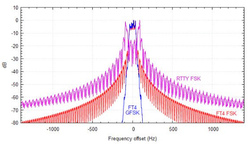
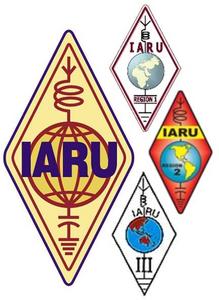 IARU already provided extensive input on the potential impact on radio communications resulting from spurious emissions from WPT devices, as detailed in
IARU already provided extensive input on the potential impact on radio communications resulting from spurious emissions from WPT devices, as detailed in 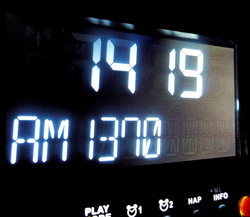 Since last summer, WWFD in Frederick, Maryland, has had special temporary authority to broadcast in all-digital. The Bryan petition appears to be the first to seek all-digital authority. The petition said the broadcast industry's experimentation with an all-digital approach "could be accelerated by actually allowing stations to fully switch to MA3; actual experiential knowledge by stations that elect to switch will provide economic proof-of-concept for stations that delay in order to see how others fare."
Since last summer, WWFD in Frederick, Maryland, has had special temporary authority to broadcast in all-digital. The Bryan petition appears to be the first to seek all-digital authority. The petition said the broadcast industry's experimentation with an all-digital approach "could be accelerated by actually allowing stations to fully switch to MA3; actual experiential knowledge by stations that elect to switch will provide economic proof-of-concept for stations that delay in order to see how others fare."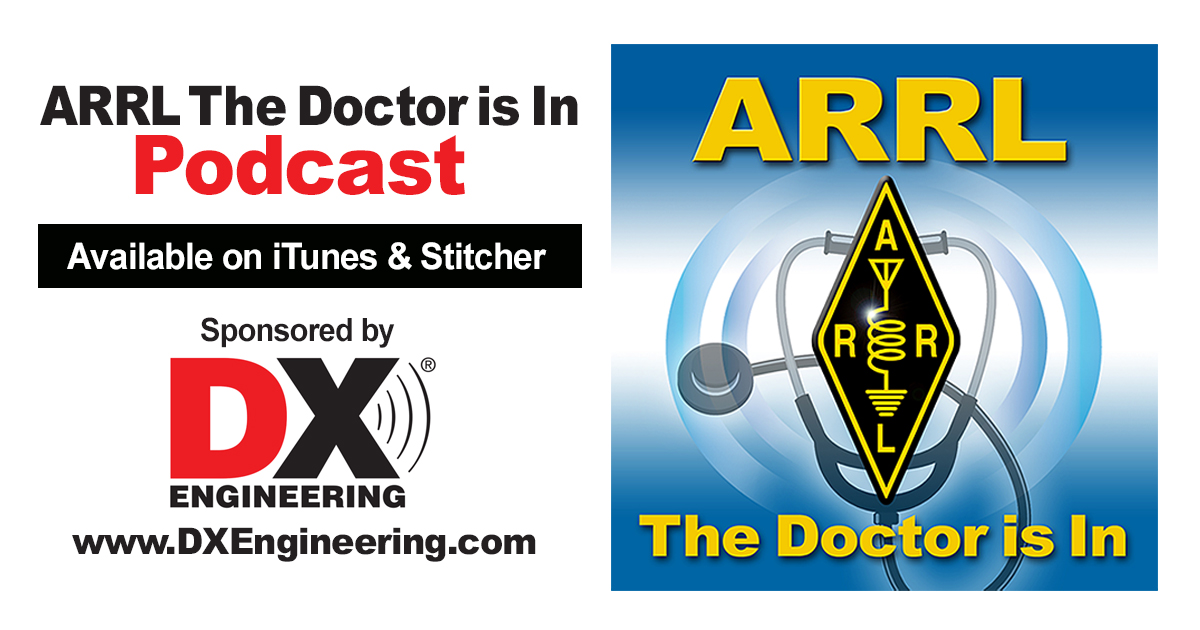 Sponsored by
Sponsored by  ARRL will present a "Meet the Authors" area at the 2019 ARRL National Convention at Hamvention® May 17 - 19 in Xenia, Ohio. This is an opportunity for visitors to speak with the radio amateurs who are inspiring today's experimenters, operators, and innovators. A schedule will be posted in the ARRL exhibit area to meet these authors and editors:
ARRL will present a "Meet the Authors" area at the 2019 ARRL National Convention at Hamvention® May 17 - 19 in Xenia, Ohio. This is an opportunity for visitors to speak with the radio amateurs who are inspiring today's experimenters, operators, and innovators. A schedule will be posted in the ARRL exhibit area to meet these authors and editors: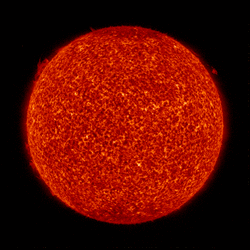 Predicted solar flux for the next 45 days is 69 on April 25 - May 2; 72, 76, 76, and 77 on May 3 - 6; 78 on May 7 - 16; 76 and 72 on May 17 - 18; 69 on May 19 - 29; 72, 76, 76, and 77 on May 30 - June 2, and 78 on June 3 - 8.
Predicted solar flux for the next 45 days is 69 on April 25 - May 2; 72, 76, 76, and 77 on May 3 - 6; 78 on May 7 - 16; 76 and 72 on May 17 - 18; 69 on May 19 - 29; 72, 76, 76, and 77 on May 30 - June 2, and 78 on June 3 - 8..jpg)
.jpg)
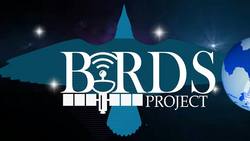 The BIRDS-3 constellation includes CubeSats from three countries: They are Nepal's first satellite, NepaliSat-1; Uguisu from Japan, and Sri Lanka's first satellite, Raavana-1. The primary mission of the BIRDS constellation is to provide ciphered short messages via its 435.375 MHz beacon, giving the opportunity for the Amateur Radio community to decipher the messages using a publicly available key on the
The BIRDS-3 constellation includes CubeSats from three countries: They are Nepal's first satellite, NepaliSat-1; Uguisu from Japan, and Sri Lanka's first satellite, Raavana-1. The primary mission of the BIRDS constellation is to provide ciphered short messages via its 435.375 MHz beacon, giving the opportunity for the Amateur Radio community to decipher the messages using a publicly available key on the 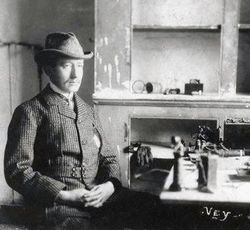
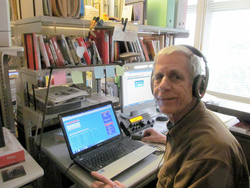
.jpg) Ulrich Rohde, N1UL, has been selected to receive the 2019 Circuits and Systems (CAS) Society Industrial Pioneer Award. The Industrial Pioneer Award recognizes exceptional and pioneering contributions in translating academic and industrial research results into improved industrial applications and/or commercial products. The IEEE Circuits and Systems Society sponsors the award, which will be presented at the International Symposium on Circuits and Systems 2019 conference. CAS awards are intended to highlight the accomplishments of CAS Society members and celebrate their dedication and contributions both within the field and to the CAS Society. Award recipients are nominated by their Society peers in order to honor the service and contributions that further strengthen the CAS Society.
Ulrich Rohde, N1UL, has been selected to receive the 2019 Circuits and Systems (CAS) Society Industrial Pioneer Award. The Industrial Pioneer Award recognizes exceptional and pioneering contributions in translating academic and industrial research results into improved industrial applications and/or commercial products. The IEEE Circuits and Systems Society sponsors the award, which will be presented at the International Symposium on Circuits and Systems 2019 conference. CAS awards are intended to highlight the accomplishments of CAS Society members and celebrate their dedication and contributions both within the field and to the CAS Society. Award recipients are nominated by their Society peers in order to honor the service and contributions that further strengthen the CAS Society. Former ARRL North Carolina Section Manager John Covington, W4CC, of Charlotte, died on April 17 after a long illness. An ARRL Life Member, he was 58. Covington served as North Carolina SM from 2000 until 2006. First licensed in 1972, Covington mainly enjoyed CW and some digital modes, but operated phone on the National Traffic System, where he was very active, and on occasional public service nets, special events, and QSO parties. He also served as the North Carolina Affiliated Club Coordinator from 1997 until 2002, and he was an Official Relay Station.
Former ARRL North Carolina Section Manager John Covington, W4CC, of Charlotte, died on April 17 after a long illness. An ARRL Life Member, he was 58. Covington served as North Carolina SM from 2000 until 2006. First licensed in 1972, Covington mainly enjoyed CW and some digital modes, but operated phone on the National Traffic System, where he was very active, and on occasional public service nets, special events, and QSO parties. He also served as the North Carolina Affiliated Club Coordinator from 1997 until 2002, and he was an Official Relay Station.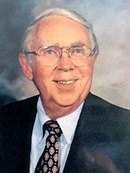 The past DX editor of CQ Magazine, John Attaway, K4IIF, of Winter Haven, Florida, died on April 15. He was 88. He served at CQ Amateur Radio magazine for 20 years, and it was Attaway who conceived of a DX Hall of Fame, which was established in 1967 to recognize outstanding DXers. Professionally, Attaway pursued a career as a research chemist, focusing on the then-nascent field of flavor chemistry involved with the citrus industry in Florida, working to identify the chemicals and compounds that give citrus fruits their unique taste. He retired as the director of scientific research for the Florida Department of Citrus, and was inducted into the Florida Citrus Hall of Fame in 2001.
The past DX editor of CQ Magazine, John Attaway, K4IIF, of Winter Haven, Florida, died on April 15. He was 88. He served at CQ Amateur Radio magazine for 20 years, and it was Attaway who conceived of a DX Hall of Fame, which was established in 1967 to recognize outstanding DXers. Professionally, Attaway pursued a career as a research chemist, focusing on the then-nascent field of flavor chemistry involved with the citrus industry in Florida, working to identify the chemicals and compounds that give citrus fruits their unique taste. He retired as the director of scientific research for the Florida Department of Citrus, and was inducted into the Florida Citrus Hall of Fame in 2001.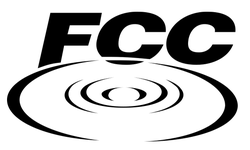 The FCC has announced a position opening that may be of interest to a radio amateur. The Commission seeking a
The FCC has announced a position opening that may be of interest to a radio amateur. The Commission seeking a 







